Vista Outdoor, a parent company of over three dozen companies, including several in the firearms industry, sent a letter to its distributors and dealers that prices of ammunition and gunpowder will be rising significantly. The decision to raise prices is due, in large part, to the pressure put on the industry with domestic demand at an all-time high, along with a global shortage of gunpowder.
The signs of imminent societal collapse are all around you pic.twitter.com/j9e0ZtPl5s
— Feni𝕏 Ammunition (@FenixAmmunition) December 4, 2023
Several big-name companies under the umbrella of Vista Outdoor are major players in the ammunition manufacturing industry. Federal Ammunition, Remington, Speer, Alliant Powder, and more are some of the largest and most reputable ammunition manufacturing companies in the world. Several of these companies manufacture and sell not just ammunition but gunpowder, primers for ammunition cartridges, bullets, cases, and more that are used by people who hand load their ammunition, like me.
While costs for ammunition and reloading supplies like powder and primers, for example, have gone up over time, in the past 20-plus years, the rise of prices has exploded (figuratively speaking).
The largest single-year increase in ammo prices since 1976 occurred in 2008, when the small arms ammunition manufacturing price index climbed by 23%. The second largest increase took place a year earlier, when the index rose by 14%. Partially as a result, between 2004 and 2015, ammunition prices more than doubled. Recent years have also seen significant price increases, with ammo production costs spiking 7% in 2022 and 8% in 2021.
In 2006-2007, when I got into competition shooting, I would buy cases of 1,000 rounds of 5.56mm ammunition in bulk for pretty cheap. The cost per round at that time was roughly between 15 and 20 cents; today, though, the prices are between 60 and 70 cents per round. The rise in costs for ammunition and reloading supplies is typically tied to supply and demand, along with rising inflation. However, statistically speaking, costs usually spike during times of panic related to the political climate and/or mass shooting incidents. Panic buying of ammunition causes huge spikes in the price of ammunition almost immediately, which causes the supply issues to grow exponentially as well.
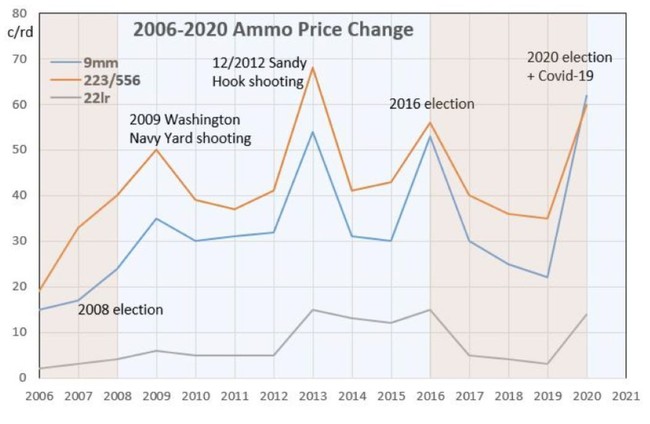
From 2019 to 2022, ammunition prices have climbed by an estimated 19%, outpacing inflation, which climbed 14% over the same period.
Rising ammo prices in the pandemic era are the continuation of a trend that began long before the current inflation crisis. Small arms ammunition prices shot up 157% from 2000 to 2022, a period in which inflation climbed by a relatively modest 70%.
...
The largest single-year increase in ammo prices since 1976 occurred in 2008, when the small arms ammunition manufacturing price index climbed by 23%. The second largest increase took place a year earlier, when the index rose by 14%. Partially as a result, between 2004 and 2015, ammunition prices more than doubled. Recent years have also seen significant price increases, with ammo production costs spiking 7% in 2022 and 8% in 2021.
Reloading materials have also seen their fair share of cost increases as well. Reloading your own ammunition has been around since the creation of cased ammunition but has steadily grown in popularity over the years. However, it wasn't until 20 to 30 years ago that reloading truly became popular. Since the early 2000s, aligning very closely with the increase in the cost of ammunition, reloading exploded in popularity mainly due to the cost savings aspect compared to buying factory ammunition. When I started reloading in 2010, the cost savings I got from it were huge. I could load one round of 5.56mm for roughly 10 cents per round, compared to buying factory ammunition of the same caliber at roughly 40 cents per round. However, due to the political climate and panic buying, reloading components have also risen in price, although the average cost to reload your own ammunition is still roughly half the cost per round of factory ammunition.
To further exacerbate the issue, the wars in Ukraine and Israel have created a huge demand for these resources, which has resulted in a global shortage of gunpowder, which affects both factory ammunition production and powder supplies for reloaders. This also makes the panic buying worse, as consumers are highly susceptible to rumors of plants shutting down or allegedly slowing production. For example, there was a recent rumor that the Lake City Army Ammunition Plant had shut down commercial production and sales for commercial use due to the wars and or political pressure causing them to stop. The LCAAP manufactures and sells ammunition to the civilian market under the Federal Ammunition brand name and is one of the biggest manufacturers and suppliers of ammunition to that market, specifically for the ammunition used by US and NATO forces. Naturally, this caused panic buyers to make long and hard runs on 5.56mm/.223 caliber, 9mm, and .45 caliber pistol, and .12 gauge shotgun rounds.
With the latest news from Vista Outdoor, we can see another sharp increase in prices across the board, and they won't be coming down anytime soon. And the vicious cycle will start anew, with a fresh round of panic buying to ensure people have ammunition before the supplies run out. Firearms enthusiasts seem to shoot themselves in the foot (again, figuratively speaking) when the prices go up because of the panic buying.





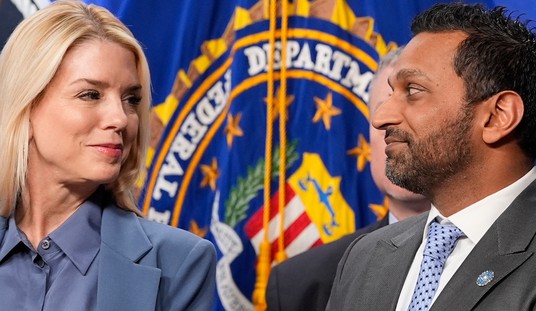



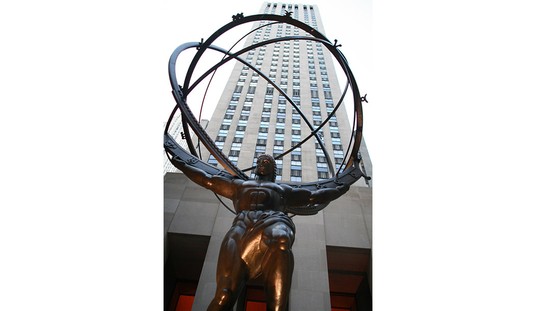
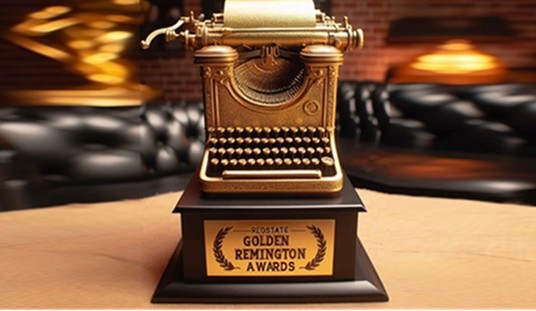
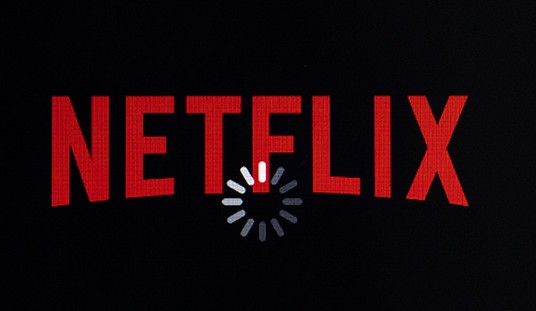

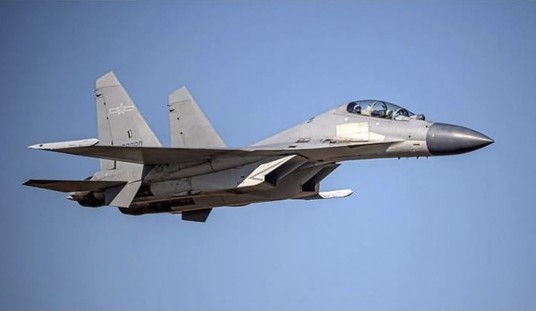
Join the conversation as a VIP Member